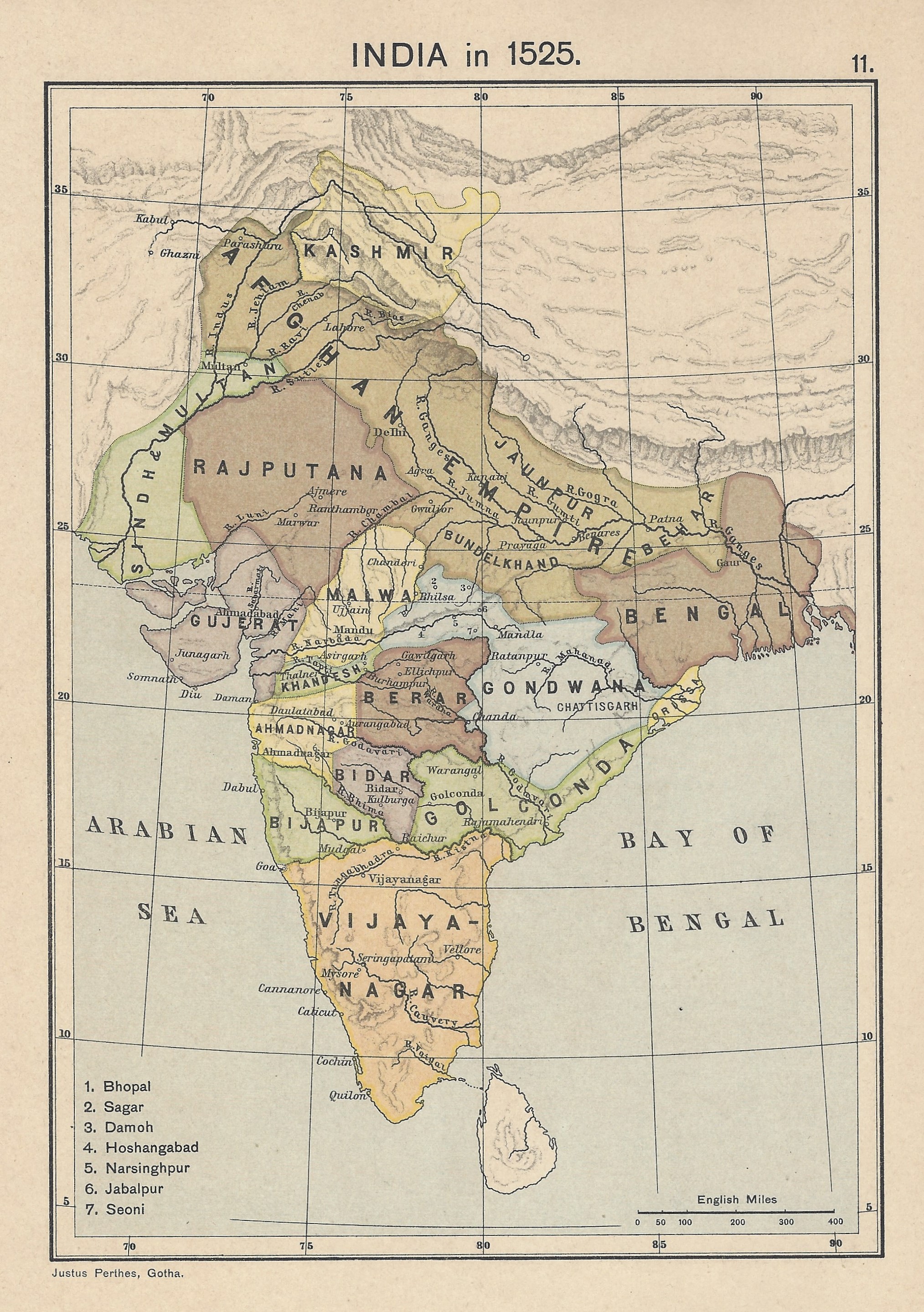|
Battle Of Wai
The Battle of Wai was fought in the fall of 1687 as a part of the Mughal–Maratha Wars. Maratha king Sambhaji sent his forces to counteract Sarja Khan, sent by Aurangzeb for the purpose of conquering Raigad. Background In April 1685, Mughal emperor Aurangzeb managed to consolidate his power by first capturing Maratha allies, the Muslim kingdoms of Golconda and Bijapur. He broke his treaties with both kingdoms, attacked them and captured them by September 1686. While Aurangzeb was away at the Siege of Golconda, the Mughals invaded Satara district. And after his victory at Golconda, Aurangzeb was able to concentrate on the Marathas. Battle Maratha Commander-in-Chief Hambirrao Mohite Hansaji Mohite (1630–1687), popularly known as Hambir Rao Mohite, was a prominent Maratha general who held the esteemed position of the 5th Senapati of the Maratha Army during the reign of Chhatrapati Shivaji Maharaj. He was recognized for ... led the Maratha side in the battle. Sarja Khan ... [...More Info...] [...Related Items...] OR: [Wikipedia] [Google] [Baidu] |
Mughal-Maratha Wars
The Deccan wars were a series of military conflicts between the Mughal Empire and the descendants of the Maratha ruler Shivaji from the time of Shivaji's death in 1680 until the death of Emperor Aurangzeb in 1707. Shivaji was a central figure in what has been called "the Maratha insurgency" against the Mughal state. Both he and his son, Sambhaji, or ''Shambuji'', typically, alternated between rebellion against the Mughal state and service to the Mughal sovereign in an official capacity. It was common practice in late 17th-century India for members of a ruling family of a small principality to both collaborate with the Mughals and rebel. Upon Shivaji's death in 1680, he was immediately succeeded by Rajaram, his second-born son by his second wife. The succession was contested by Sambhaji, Shivaji's first-born son by his first wife, and quickly settled to his benefit as the result of the murders of Rajaram's mother, of the loyal courtiers favouring Rajaram's succession, and by ... [...More Info...] [...Related Items...] OR: [Wikipedia] [Google] [Baidu] |
Golconda Sultanate
The Sultanate of Golconda (; ) was an early modern kingdom in southern India, ruled by the Persianate, Shia Islamic Qutb Shahi dynasty of Turkoman origin. After the decline of the Bahmani Sultanate, the Sultanate of Golconda was established in 1518 by Quli Qutb Shah, as one of the five Deccan sultanates. The kingdom extended from parts of the modern-day Indian states of Karnataka, Andhra Pradesh, Odisha and Telangana. The Golconda sultanate was constantly in conflict with the Adil Shahis and Nizam Shahis, which it shared borders with in the seventeenth century to the west and northwest.C.E. Bosworth, ''The New Islamic Dynasties'', (Columbia University Press, 1996), 328. In 1636, Mughal emperor Shah Jahan forced the Qutb Shahis to recognize Mughal suzerainty and pay periodic tributes. The dynasty came to an end in 1687 during the reign of its seventh sultan Abul Hasan Qutb Shah, when the Mughal ruler Aurangzeb arrested and jailed Abul Hasan for the rest of his life in Daul ... [...More Info...] [...Related Items...] OR: [Wikipedia] [Google] [Baidu] |
Conflicts In 1687
Conflict may refer to: Social sciences * Conflict (process), the general pattern of groups dealing with disparate ideas * Conflict continuum from cooperation (low intensity), to contest, to higher intensity (violence and war) * Conflict of interest, involvement in multiple interests which could possibly corrupt the motivation or decision-making * Cultural conflict, a type of conflict that occurs when different cultural values and beliefs clash * Ethnic conflict, a conflict between two or more contending ethnic groups * Group conflict, conflict between groups * Intragroup conflict, conflict within groups * Organizational conflict, discord caused by opposition of needs, values, and interests between people working together * Role conflict, incompatible demands placed upon a person such that compliance with both would be difficult * Social conflict, the struggle for agency or power in something * Work–family conflict, incompatible demands between the work and family roles of a ... [...More Info...] [...Related Items...] OR: [Wikipedia] [Google] [Baidu] |
Battles Involving The Mughal Empire
The Mughal Empire was founded in 1526 by Babur. He defeated Ibrahim Khan Lodi, Ibrahim Lodi in the First Battle of Panipat, marking the beginning of Mughal dominance. Babur went on to defeat the powerful Rajput confederacy of Rana Sanga in his decisive victory in the Battle of Khanwa, which solidified Mughal rule in India. The empire continued to expand, reaching its greatest territorial extent during the reign of Aurangzeb. Background The Mughal Empire was founded by Babur (reigned 1526–1530), a Central Asian ruler descended from the Turco-Mongol conqueror Timur (the founder of the Timurid Empire) on his father's side and from Genghis Khan on his mother's side. Ousted from his ancestral domains in Central Asia, Babur turned to India to fulfill his ambitions. He established himself in Kabul and then steadily advanced southward into India from Afghanistan through the Khyber Pass. Babur's forces defeated Ibrahim Lodhi in the First Battle of Panipat. However, by this time, Lodhi's ... [...More Info...] [...Related Items...] OR: [Wikipedia] [Google] [Baidu] |
1687 In India
Events January–March * January 3 – With the end of latest of the Savoyard–Waldensian wars in the Duchy of Savoy between the Savoyard government and Protestant Italians known as the Waldensians, Victor Amadeus III, Duke of Savoy, carries out the release of 3,847 surviving prisoners and their families, who had forcibly been converted to Catholicism, and permits the group to emigrate to Switzerland. * January 8 – Richard Talbot, 1st Earl of Tyrconnell, is appointed as the last Lord Deputy of Ireland by the English crown, and begins efforts to include more Roman Catholic Irishmen in the administration. Upon the removal of King James II in England and Scotland, the Earl of Tyrconnell loses his job and is replaced by James, who reigns briefly as King of Ireland until William III establishes his rule over the isle. * January 27 – In one of the most sensational cases in England in the 17th century, midwife Mary Hobry murders her abusive husband, Denis H ... [...More Info...] [...Related Items...] OR: [Wikipedia] [Google] [Baidu] |
Siege Of Golconda
The siege of Golconda (1687 CE) was an eight-month military siege of the Golconda Fort (in present-day Telangana, India). This siege was personally directed by the Mughal emperor Aurangzeb against the Golconda Sultanate, ruled by king Abul Hasan Qutb Shah. It was the second Mughal siege of the fort, following an aborted attempt by Aurangzeb in 1656 as a prince of emperor Shah Jahan. The event served as the climax of the Golconda Sultanate, which was annexed into the Mughal Empire as a result of the victory of the siege. The military confrontation was one of the final stages in the Mughal Empire's expansion southwards in the Indian subcontinent. The siege was lengthy and laborious, hampered by the strength of the fort, environmental conditions, and dissent within the Mughal administration. The siege was won only through treachery. It exacerbated drought, famine and epidemic in the region. Background During the reign of the fifth Mughal emperor Shah Jahan, the Mughals had man ... [...More Info...] [...Related Items...] OR: [Wikipedia] [Google] [Baidu] |
Bijapur Sultan
The Sultanate of Bijapur was an early modern kingdom in the western Deccan and South India, ruled by the Muslim Adil Shahi (or Adilshahi) dynasty. Bijapur had been a ''taraf'' (province) of the Bahmani Kingdom prior to its independence in 1490 and before the kingdom's political decline in the last quarter of the 15th century. It was one of the Deccan sultanates, the collective name of the kingdom's five successor states. The Sultanate of Bijapur was one of the most powerful states on the Indian Subcontinent at its peak, second to the Mughal Empire which conquered it in 1686 under Aurangzeb. After emigrating to the Bahmani Sultanate, Yusuf Adil Shah rose through the ranks to be appointed governor of the province of Bijapur. In 1490, he created a ''de facto'' independent Bijapur state which became formally independent with the Bahmani collapse in 1518. The Bijapur Sultanate's borders changed considerably throughout its history. Its northern boundary remained relatively stable, st ... [...More Info...] [...Related Items...] OR: [Wikipedia] [Google] [Baidu] |
Aurangzeb
Alamgir I (Muhi al-Din Muhammad; 3 November 1618 – 3 March 1707), commonly known by the title Aurangzeb, also called Aurangzeb the Conqueror, was the sixth Mughal emperors, Mughal emperor, reigning from 1658 until his death in 1707, becoming the second longest-ruling emperor of Hindustan (48 years and 7 months). Under his reign, the Mughal Empire reached its greatest extent, with territory spanning nearly the entirety of the Indian subcontinent. Aurangzeb and the Mughals belonged to a branch of the Timurid dynasty. He held administrative and military posts under his father Shah Jahan () and gained recognition as an accomplished military commander. Aurangzeb served as the viceroy of the Viceroy of the Deccan, Deccan in 1636–1637 and the governor of Gujarat under Mughal Empire, Gujarat in 1645–1647. He jointly administered the provinces of Subah of Multan, Multan and Sind State, Sindh in 1648–1652 and continued expeditions into the neighboring Safavid Iran, Safavid ter ... [...More Info...] [...Related Items...] OR: [Wikipedia] [Google] [Baidu] |
Maharashtra
Maharashtra () is a state in the western peninsular region of India occupying a substantial portion of the Deccan Plateau. It is bordered by the Arabian Sea to the west, the Indian states of Karnataka and Goa to the south, Telangana to the southeast and Chhattisgarh to the east, Gujarat and Madhya Pradesh to the north, and the Indian union territory of Dadra and Nagar Haveli and Daman and Diu to the northwest. Maharashtra is the second-most populous state in India, the third most populous country subdivision in South Asia and the fourth-most populous in the world. The state is divided into 6 divisions and 36 districts. Mumbai is the capital of Maharashtra due to its historical significance as a major trading port and its status as India's financial hub, housing key institutions and a diverse economy. Additionally, Mumbai's well-developed infrastructure and cultural diversity make it a suitable administrative center for the state, and the most populous urban are ... [...More Info...] [...Related Items...] OR: [Wikipedia] [Google] [Baidu] |
Sambhaji
Sambhaji (Sambhajiraje Shivajiraje Bhonsle, ; 14 May 1657 – 11 March 1689), also known as Shambhuraje, ruled from 1681 to 1689 as the second king ( Chhatrapati) of the Maratha Empire, a prominent state in early modern India. He was the eldest son of Shivaji, the founder of the Maratha Empire. At the age of nine, Sambhaji was taken as a political hostage of the Mughal Empire, to guarantee his father's compliance with the treaty of Purandar. He later accompanied his father to Agra where both were placed under house arrest by the Mughal Emperor Aurangzeb; they subsequently escaped. He was later confined by his father at Panhala Fort, with some theories suggesting that it was due to his addiction to "sensual pleasures" or for violating a Brahmin woman. * * * He subsequently defected to the Mughal Empire and served under Diler Khan in the Battle of Bhupalgarh against his father. He ascended the throne following his father's death, with his rule being largely shaped by th ... [...More Info...] [...Related Items...] OR: [Wikipedia] [Google] [Baidu] |




